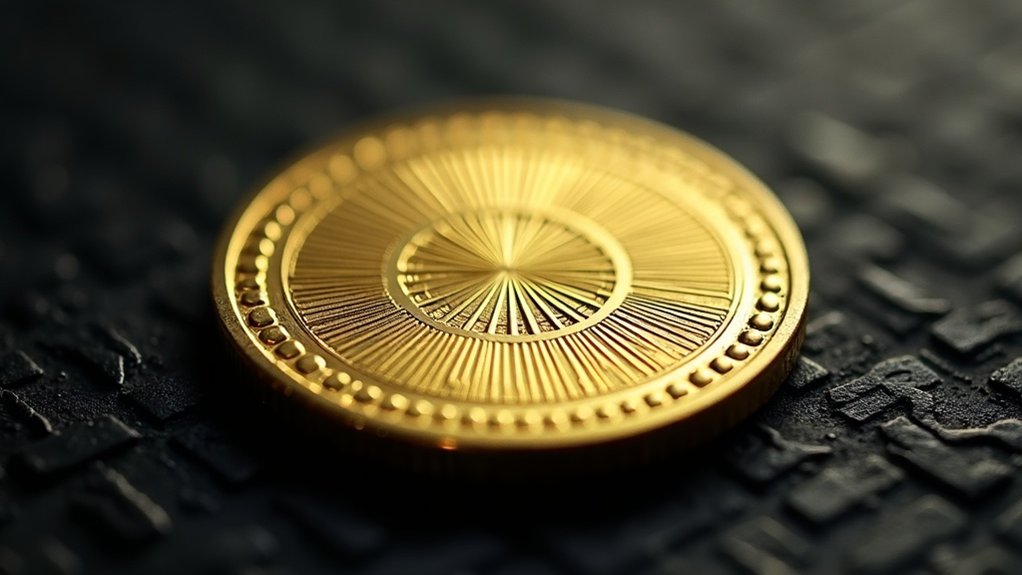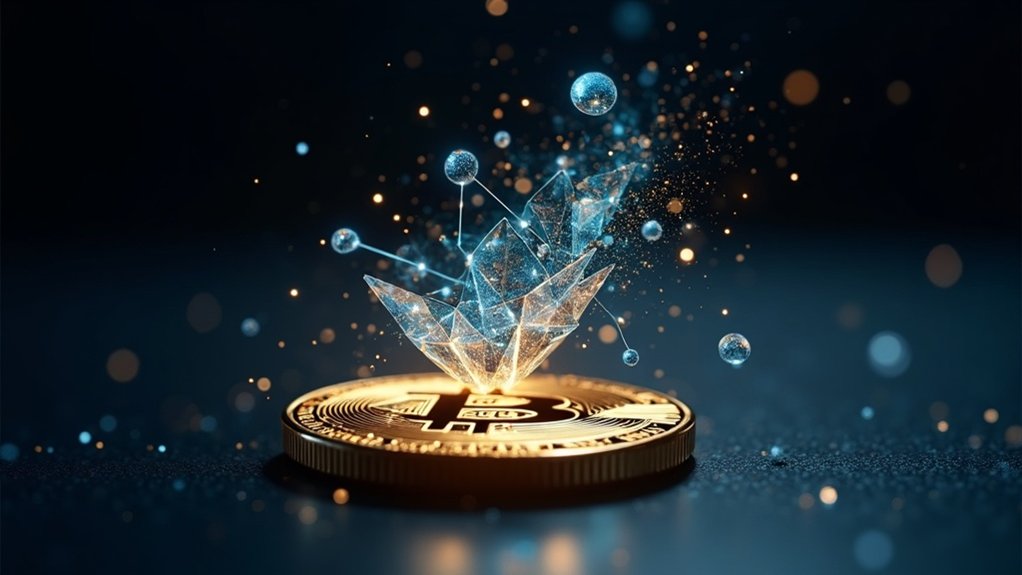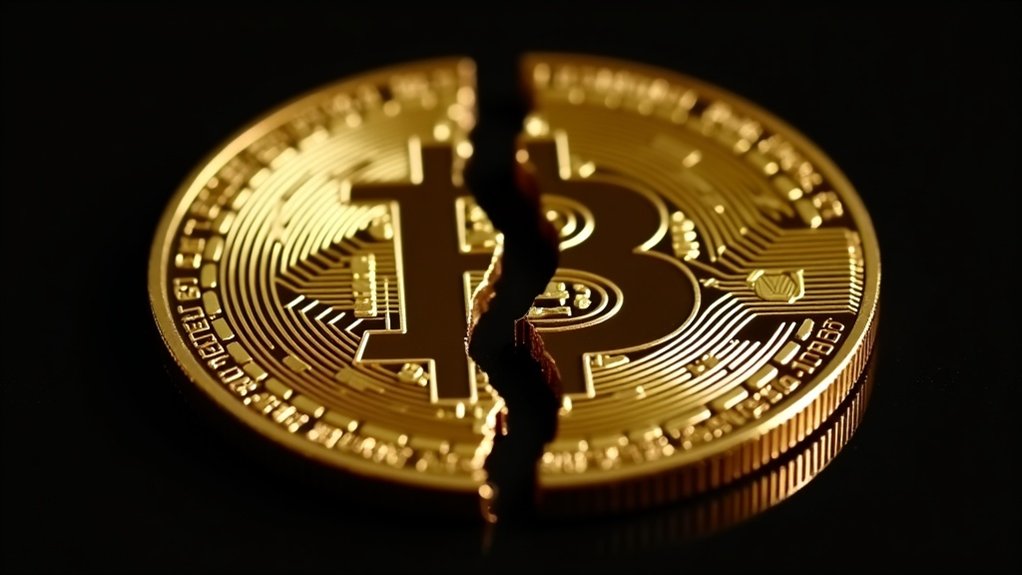Bitcoin’s smallest unit isn’t “bit money” – it’s the satoshi. Named after Bitcoin’s mysterious creator, one satoshi equals 0.00000001 BTC (one hundred millionth of a bitcoin). This tiny denomination makes precise transactions possible as Bitcoin’s value increases. All Bitcoin transactions actually operate using satoshis, not whole coins. They’re essential for micropayments and the Lightning Network. Without them, Bitcoin would be practically unusable for everyday purchases. The deeper you go into crypto, the more these tiny units matter.
Precision matters. In the world of Bitcoin, nothing demonstrates this better than the satoshi—the smallest possible unit of Bitcoin currency. Named after Bitcoin’s mysterious creator, Satoshi Nakamoto, this tiny fraction represents exactly one hundred millionth of a bitcoin (0.00000001 BTC). That’s right, each bitcoin splits into 100 million satoshis. Not 99 million. Not 101 million. Exactly 100 million pieces.
The name wasn’t always settled. Back in 2008, when Bitcoin was just getting started, people tossed around different terms. “Austrian” was one suggestion. Seriously. But by late 2010, “satoshi” stuck. Thank goodness. Imagine saying, “I just sent you 500 austrians.” Awkward. Much like Ethereum-based tokens, which emerged years later with their own naming conventions, Bitcoin’s smallest unit needed a clear identity.
Before ‘satoshi’ became Bitcoin’s smallest unit, early adopters actually considered naming it ‘austrian’—narrowly avoiding countless awkward payment conversations.
Why does this microscopic unit even matter? Simple. Bitcoin’s internal workings run on satoshis, not whole bitcoins. Every transaction, every balance—it’s all satoshis behind the scenes. This enables absolute precision in recording who owns what. No rounding errors here, folks.
Transaction fees? Quoted in satoshis per byte. Micropayments? Powered by satoshis. Lightning Network‘s near-instant transfers? Yep, satoshis again. They’re everywhere in the Bitcoin ecosystem. The atomic unit of transactions ensures all Bitcoin operations maintain complete accuracy across the network.
As Bitcoin’s price climbs, these tiny units become increasingly important. When a single bitcoin costs thousands of dollars, nobody’s buying coffee with whole coins. But satoshis? Now we’re talking. They make Bitcoin accessible to everyone, not just the wealthy.
In some advanced payment systems like Lightning Network, even smaller units called millisatoshi are used for greater precision. Traders love them too. “Sats,” “SAT,” or just “S”—whatever you call them, they’re perfect for tracking small price movements. It’s much easier to say “gained 500 sats” than “gained 0.00000500 bitcoin.” No squinting required.
The fixed supply of 21 million bitcoins means satoshis are essential for Bitcoin’s long-term usability. Without this subdivision, Bitcoin would be practically unusable at scale. One hundred million pieces per coin. Perfect granularity. Bitcoin’s smallest unit isn’t just clever—it’s necessary.
Frequently Asked Questions
How Can I Buy Satoshis Without Purchasing a Whole Bitcoin?
Buying satoshis is straightforward.
Most crypto exchanges allow fractional bitcoin purchases without requiring a whole coin. Users simply specify the dollar amount they want to spend or the satoshi amount they want to buy. Platforms like Crypto Dispensers, RockItCoin, and major exchanges all support this.
Just deposit fiat, place an order for the desired fraction, and the exchange credits the equivalent satoshis.
Be mindful of transaction fees though. They can eat into small purchases.
Can Satoshis Be Converted Back to Traditional Currency Easily?
Yes, satoshis can be converted back to traditional currency fairly easily. Most cryptocurrency exchanges support this conversion.
Users simply sell their satoshis (technically selling Bitcoin) for dollars, euros, or other fiat currencies. There are fees involved, of course.
The process works through exchanges like Coinbase or Binance, Bitcoin ATMs, or peer-to-peer platforms. Small amounts might face minimum withdrawal thresholds though.
Bitcoin’s volatility means value changes constantly during conversion.
Are There Physical Representations of Satoshis I Can Hold?
No physical satoshis exist in the traditional sense.
Unlike whole bitcoins, which have physical representations like Casascius Coins, satoshis are simply too small in value to merit physical embodiment.
Those commemorative Bitcoin tokens? They represent larger Bitcoin amounts, not individual satoshis.
The satoshi remains purely digital – a hundred millionth of a bitcoin that exists only in the blockchain.
Collectors might enjoy physical Bitcoin tokens, but they’re holding symbols, not actual satoshis.
How Do Transaction Fees Compare When Using Satoshis Versus Bitcoin?
Transaction fees don’t actually differ between satoshis and bitcoin – they’re the same thing, just different units.
It’s like comparing inches to feet. Fees are calculated based on transaction size in bytes, not value sent.
The difference? Satoshis offer more precision. You can set a fee of 10 satoshis/vB rather than 0.0000001 BTC/vB.
Makes a huge difference during network congestion.
Lightning Network fees work differently though, with some percentage-based components.
Will the Value of a Satoshi Increase if Bitcoin Becomes Scarce?
Yes, satoshi value will increase with Bitcoin scarcity. Simple math.
When total Bitcoin supply tightens through halvings, lost coins, and dormant wallets, each satoshi becomes more valuable.
Think basic economics: limited supply meets growing demand equals higher prices. Period.
Bitcoin’s cap of 21 million isn’t changing, and with an estimated 17-25% already gone forever, the squeeze is real.
Each tiny satoshi rides the same scarcity wave as its parent coin.









